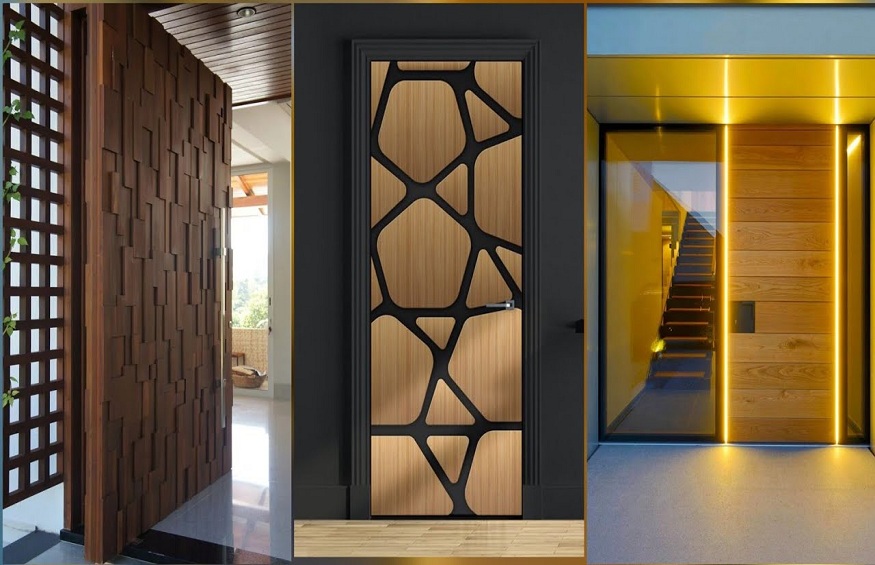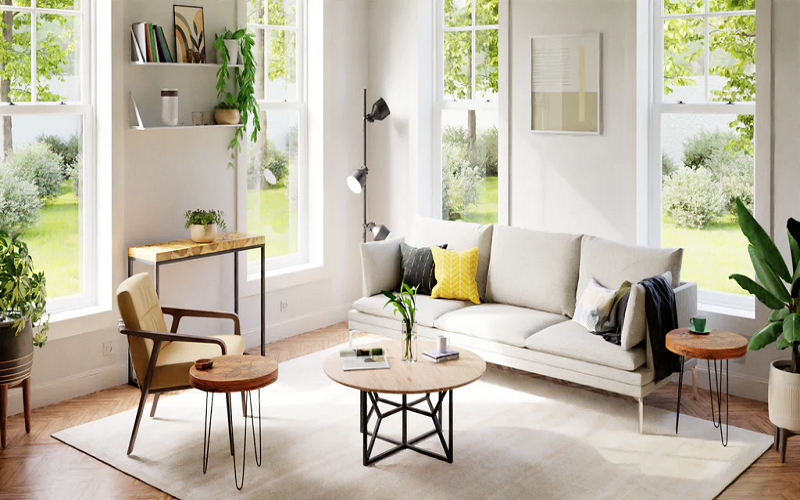Depending on your needs in terms of insulation (both sound and thermal), the layout of your home or your desires in terms of aesthetics and design , you will choose one type of door rather than another.
Solid interior doors
The role of the solid door is to separate two rooms from each other . It can take on the role of decorative element. Depending on its location in your home, it can also help improve your thermal and sound insulation .
A solid panel completely fills the solid interior doors. This can be made of different materials : solid wood, chipboard, laminated wood, aluminum, PVC. Often this type of door is heavy and sturdy. Note that the choice of material does not change the sound insulation performance of your door in any way.
Interior glass doors
With a glass interior door, you isolate two rooms from each other, but you keep a good supply of light , whether natural or artificial. A glass door also has the advantage of not visually partitioning the space, and therefore of enlarging it.
You have two options. You can opt for a fully glazed door , or for a door combining glass and wood or aluminum . Note that depending on the room you are booking a glass door for, you can choose frosted or clear glass . Frosted glass lends itself particularly well to bedrooms.
Double interior doors
Double doors consist of two panels . They can be solid or glazed. They will find a place of choice around large rooms and enhance the high ceilings.
You have two options. Your double door can have only one leaf (in this case the door works like a classic door), or have two leaves that open. This allows you to move around more freely and bring more light into your room .
If you have not found your happiness with the previous doors, you can always turn to the customizable doors . This “group” of doors lists isoplane doors (they have a flat face) and post formed doors (they have a molded face). Both are paintable doors . And their great advantage is that you can customize them to match your interior decoration even better.
Note that the customizable doors exist in two versions: the standard and the “technical” . The latter has good performance in terms of acoustic, thermal and fireproof qualities.
Your interior doors can have two types of opening: hinged and sliding doors . Note that for the latter, you will need to (have) installed a surface or pocket rail.
swing doors
Many homes opt for interior swing doors . They offer a very practical side with a circulation space left free. Its leaf only opening on one side, this door saves space. On the other hand, you have to make sure you have the space to open it, this single leaf! The room must therefore have sufficient surface area and clearance . If this is not the case, it is better to go for another type of door, otherwise you will be bothered every day… To make the right choice, be aware that hinged doors open by 160° rotation about. Also make sure that the open leaf does not prevent access to any switches.
The hinged door comprises an opening and a frame. This is the part attached to your masonry. Do not forget, when (having) your door installed, to decide on the opening direction! We speak of “ right pushing ” and “ left pushing ”.
Sliding interior doors
The sliding door is multifunctional. It can act as a removable partition between two rooms or play the role of a “real” door. As you just have to slide it on its rail to open or close it, it saves real space : no need to pay attention to the minimum clearance required! Small rooms love these kind of doors! The rail allowing the opening and closing movements of the door can be located on the floor or on the ceiling.
There is also the pocket door . It saves you even more space because it requires no rail: it fits into the wall. On the other hand, it will ask you, as you can imagine, for major work to adapt your wall .
Finally, in the category of sliding doors, you will also find the overlay door . This is the ideal type of door to save space and avoid major development work on existing partitions. Unlike the pocket door, the sliding door slides along a rail fixed against the wall, and not in your partition. Exposed rails can become a real plus in your decor, if the style of your home lends itself to it.
Folding doors
They represent a good alternative to the sliding door. You will also find them under the names of accordion doors or extendable doors . They allow you to easily optimize the space, and to modulate it as you wish, according to your needs. They are ideal for small rooms . Thanks to its leaves, the folding door folds back on itself, for maximum space saving. It attaches to a rail located in the upper part of your frame. In addition to separating two rooms, you can also use folding doors to close a closet or your dressing room. Folding doors are most often made of PVC .
Pivot doors
The pivoting door always has its little effect! It will naturally find its place in contemporary interiors . The pivoting door hinges on a central vertical pivot , off-center on the left or on the right, and offers a wide opening to the occupants of the accommodation. Obviously, this particular type of opening requires having a large area of movement, and is therefore reserved for large spaces . The bonuses: an automated or anti-pinch opening, which households with young children will particularly appreciate!
The design of your interior door can adapt to your space and your style of interior decoration. You just have to choose a material in line with your universe.





